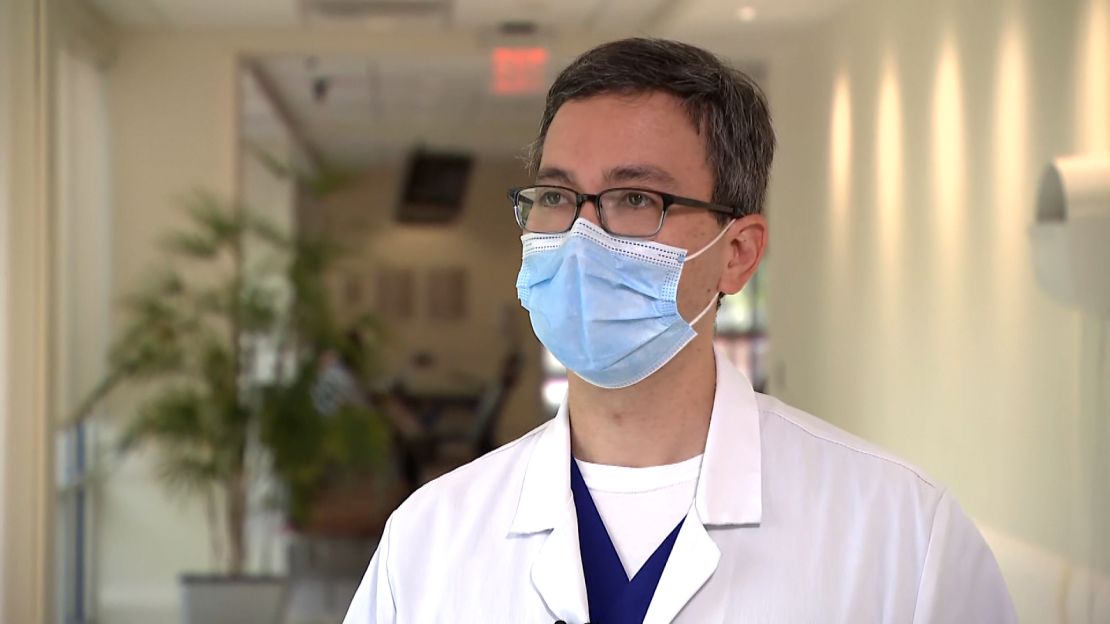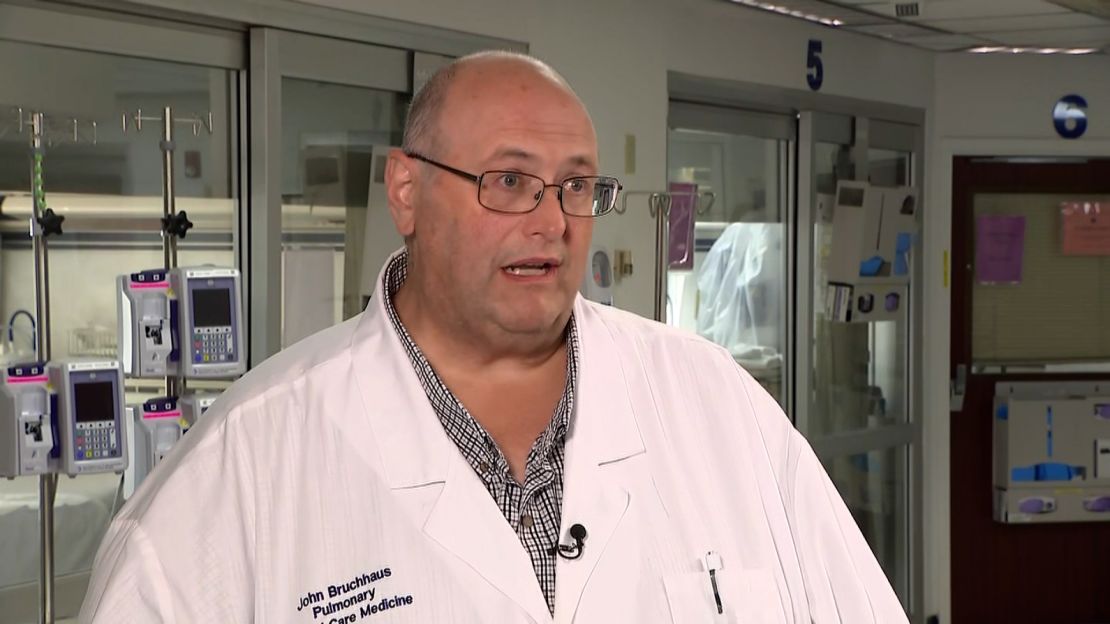For Dr. Frank Courmier, the latest Covid-19 surge hitting his Louisiana hospital is different from the three preceding waves – the people now getting sick are younger.
“We’re getting people in their third and fourth decades, otherwise healthy with no real preexisting conditions coming in, unvaccinated and very sick, very fast,” Courmier told CNN. “We see almost no vaccinated patients.”
The younger patients have meant that Courmier, the medical director for pulmonary and critical services at Our Lady of Lourdes Regional Medical Center in Lafayette, has had to have difficult conversations with their children.
“Something new that I’m having to struggle with is now having to tell four-, five- and nine-year-olds about their loved one and not being able to get them home or be able to see them,” he said with a catch in his throat. “That’s difficult. And I don’t want to go through that over and over again.”
“I have children of my own,” he later added, “and it’s just very difficult to imagine if my kids had to go through the same issue.”
Courmier was one of several Louisiana-based health experts who spoke to CNN this week about the rise in Covid-19 cases and hospitalizations over the past couple weeks. Their experiences are similarly being seen across under-vaccinated parts of the US, including much of the Deep South, where the coronavirus, led by its transmissible Delta variant, has continued to prey on the unvaccinated.

About 36% of people in Louisiana have been fully vaccinated, according to the US Centers for Disease Control and Prevention – the fifth-lowest rate of any state.
Adjusted for population, Louisiana also has the fifth-highest number of new Covid-19 cases over the past week, CDC data shows. The tally has been growing, too. The number of new Covid-19 cases has increased for the past 28 days and is increasing in all nine regions of the state, the Louisiana Department of Health said Tuesday. Since early May, 94% of the state’s 19,200 cases have been among people not fully vaccinated.
Still, deaths from Covid-19 remain at lows not seen since March 2020. An increase in deaths could still come, as a rise in cases generally translates to more deaths over time. Or it may not at this point in the pandemic, given that older people, who are more susceptible to the illness, have been vaccinated at much higher rates.
In any case, the rise in cases and hospitalizations has been difficult for Dr. Courmier and Lafayette’s Our Lady of Lourdes hospital, which has the highest number of Covid-19 patients in the state.
“We’re going to witness more stress on the system,” Courmier told CNN. “More stress on us as we’re having to take care of these patients. Once they arrive they’re in the hospital for weeks and months.”
Immunity either by vaccine or sickness

St. Francis Medical Center In Monroe, in northern Louisiana, currently has the second-highest number of Covid-19 patients in the state. Dr. John Bruchhaus, the co-director of the intensive care unit, said the hospital is expanding its capacity for patients by turning what had been a post-surgical ICU into a Covid-19 unit.
He said he has primarily seen patients in their 30s and 40s who are unvaccinated arrive for care. Most of them are mildly ill but about 15% to 20% require hospital admission, Bruchhaus said. He offered a warning to those who have remained skeptical of the vaccine.
“Over the next few weeks, it’s partly up to you of how you’re going to gain immunity: Whether natural immunity by obtaining the Delta virus or by getting the vaccine,” he said. “And the smarter choice would be to get the vaccine to prevent the disease.”
That’s the challenge for Katie Barber, who runs the Covid-19 vaccine program at the St Francis Medical Group in Monroe. She said they administered about 25 vaccine doses one recent day, well below the 350 to 400 daily doses at the peak of the effort.
“I feel like the people who believe in our health care and the people who want a vaccine have received them,” she said. The challenge is “alleviating and educating those who currently don’t and being able to reach that population.”
She said she hoped over time more and more people will come around to see the benefits of the free and safe vaccine.
“Seeing people, seeing their loved ones, seeing other people that they know and trust receive it, and seeing that they are perfectly fine. I think that’s what it really takes, is making it personal,” she said. “Or someone in their family becoming very sick then makes it a priority.”







